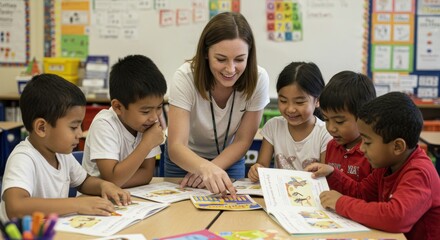Learning Hub has many educational resources that help keep students engaged. It offers a wide range of interesting learning activities, including games, science projects, and more. It also provides a variety of ways to practice new skills, such as blending sounds and understanding decimals.
Field leaders have shared emerging best practices in operating learning hubs that meet student needs while adhering to strict safety and public health guidelines.

Learn at home websites provide access to daily learning journeys for students in Pre-K, grades 1-2, grades 3-5, and grades 6- 9+. The journeys include reading and writing, geography, science, social studies, and more. They also allow students to take virtual field trips and participate in live chats with authors.
Moreover, the site offers free resources such as animated adventure stories to motivate young learners to read online storybooks. It also has sight word readers to help children with early literacy skills. Additionally, the site allows students to track their progress and earn bonus points to redeem for books in clubs.
For those who want to teach their children at home during the coronavirus pandemic, Scholastic has a variety of digital learning resources available for them. These resources include daily project-based learning activities that are aligned with the curriculum. These activities are fun and engaging for children of all ages.
In addition, Scholastic has a wide selection of classroom supplies, e-learning, and specialist health and care content that can be used to support NHS organisations and individuals. These resources are designed to help students learn the essential skills for their career and lifelong success. These tools are easy to use and can be delivered on any device. They are also free and can be accessed by teachers, schools, and colleges.
National Geographic for Kids
National Geographic for Kids takes the famed magazine’s traditional photography and reporting background and distills it into a one-stop shop for nature, history, and world culture. It also offers an array of games, puzzles, and videos to entertain and educate children. In addition to teaching about animals and other creatures, the site’s resources can strengthen critical thinking skills and memory. Its Homework Help section helps students with research for reports and homework.
This resource is part of the National Geographic Society, a huge nonprofit organization that focuses on education and research. Its yellow rectangle logo is prominent on the covers of its magazines, TV channels, and other media. The Society studies world cultures and geography, and aims to protect the environment.
In addition to its websites and TV channels, the Society publishes books and has a museum partnership program. This allows museums to use their National Geographic content.
Watching shows and watching channels that inform viewers about other countries is an excellent way to develop cultural appreciation. Seeing snippets of the lives of people in other places breeds curiosity and urges students to seek more information. National Geographic’s video library offers a wide variety of options to pique the interest of children and teenagers. The site features a search bar, allowing users to find particular clips or topics easily.
Exploratorium
Located in San Francisco, the Exploratorium is more than just a museum; it’s one giant laboratory. The cavernous museum combines science, art, and human perception and was founded in 1969 by physicist Frank Oppenheimer, brother of Manhattan Project scientist J Robert Oppenheimer. The museum is designed to be interactive and hands-on, with nearly every surface being a possible platform for exploration.
The exhibits here range from simple to complex, with the museum’s orange-vested Explainers (who are usually high school students) helping visitors make sense of the world around them. Those with extra energy can dash from one clever exhibit to the next as they play with sound waves, experiment with prisms, or try to figure out how fog is formed.
In addition to the many hands-on activities, the museum offers a variety of workshops and programs for teachers and kids. Those looking for an educational experience outside the classroom can visit their gallery workshop, which features a large outdoor space where kids can learn about winds, tides, and other natural phenomena of the Bay Area.
If you’re not bringing your kids along, the museum has an internal workshop where adults can participate in creative making activities like sculpting and screenprinting. There are also indoor and outdoor lockers available for storing any purchases you want to bring. The museum also has a low-key take-out spot called the Seismic Joint Cafe and Seaglass Restaurant in the Bay Observatory.
Encantos Learning Hub
In addition to creating its educational storytelling content, the B Corp also wants to become a hub for curated learning experiences from outside creators. Wolfe Pereira explains that the company plans to create an approval process for creator submissions that will be based on a combination of human review and machine learning, similar to how Netflix determines which content to recommend to users.
Encantos’ education content for kids and families is designed by early childhood educators and brought to life with world-class designers and animators. For example, the bilingual Canticos series teaches preschoolers English and Spanish through the songs and nursery rhymes children love to sing and dance to. Featuring the popular “Little Chickies” characters Ricky Chickie, Kiki Chickie, and Nicky Chickie, the content introduces key early learning concepts like alphabet and numbers, shapes, colors, and more in fun, interactive ways.
Another digital learning resource from the brand is Tiny Travelers, which features country-specific activity books that teach kids about the world’s diverse culture and geography, with activities ranging from word searches to coloring, cutting, and pasting. Parents can engage with their children to talk about the lessons they’ve learned from each video and story, and they can encourage them to learn more about a particular culture by exploring local traditions, holidays, and foods in their community or in the home country of a foreign-language speaker.